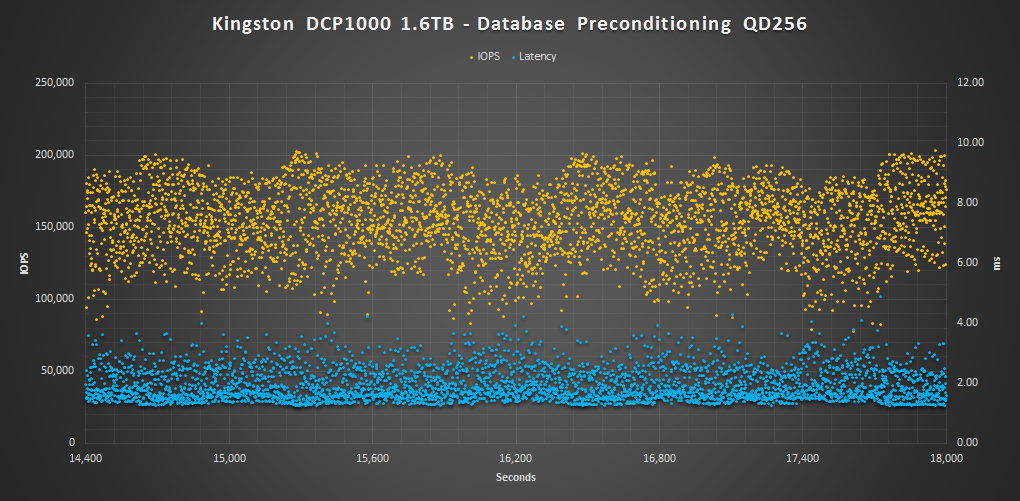SERVER PROFILES
While synthetic 100% read or 100% write workloads do a great job of testing the underlying technology and reporting easy to understand results, they aren’t always indicative of how the drive will be used by the end user. Workloads that simulate enterprise environments try to bridge that gap without being overly complex. The process of measuring our server workload performance is the same as measuring random. The drive is first secure erased to get it in a clean state. Next, the drive is filled by sequentially writing to the RAW NAND capacity twice. We then precondition the drive with respective server workload at QD256 until the drive is in a steady state. Finally, we cycle through QD1-256 for 5 minutes each measuring performance. All this is scripted to run with no breaks in between. The last hour of our preconditioning, the average IOPS, and average latency for each QD is graphed below.
The Database profile is 8K transfers, and 67% percent of operations are reads.
During our database run, the Kingston DCP1000 did very well. From QD1-64 it beat out all except for the Micron 9100 MAX. At QD128, however, there was a dip in performance and it was overtaken by the Intel DC P3608 and HGST SN100, but gained back the lead at QD256. Taking a look back at the consistency, again, because this is a mixed workload, we see the IOPS distribution ranges about 40-50K IOPS from the average at QD256.
The Email Server profile is similar to the Database profile, only it 8K transfers at 50% reads and 50% writes.
During our email server profile, the Kingston DCP1000 performed very similarly to how it did in the database test. Because this test is a bit more write intensive, we see that it averaged about 120K IOPS at QD256. It Beats out the competition from QD1-16, but the Micron takes the lead at QD32 and at QD 64-256 it is a battle between the Intel DC P3608 and HGST SN100.
 The SSD Review The Worlds Dedicated SSD Education and Review Resource |
The SSD Review The Worlds Dedicated SSD Education and Review Resource | 


wow this one is a true beast
What raid level did you use for the four logical drives ?
RAID 0. Stay tuned as we are doing same to two of these drives soon.